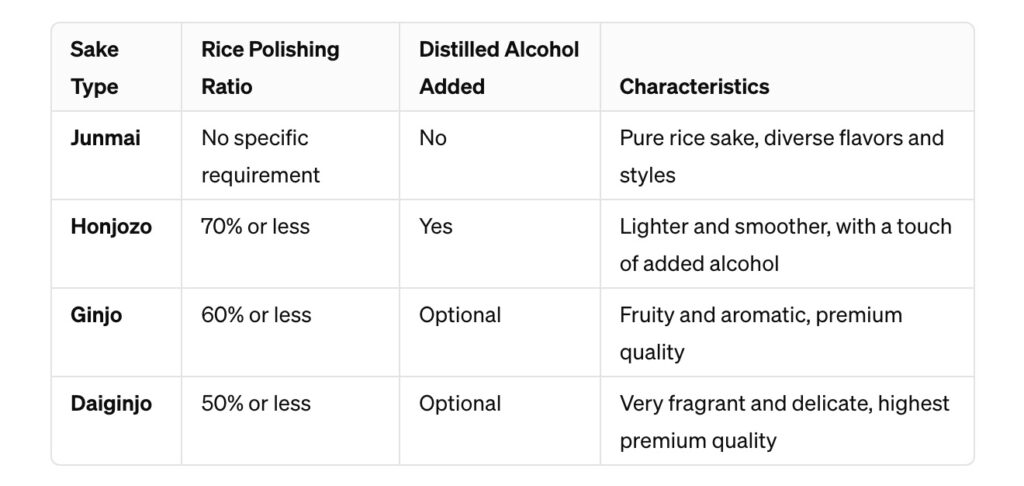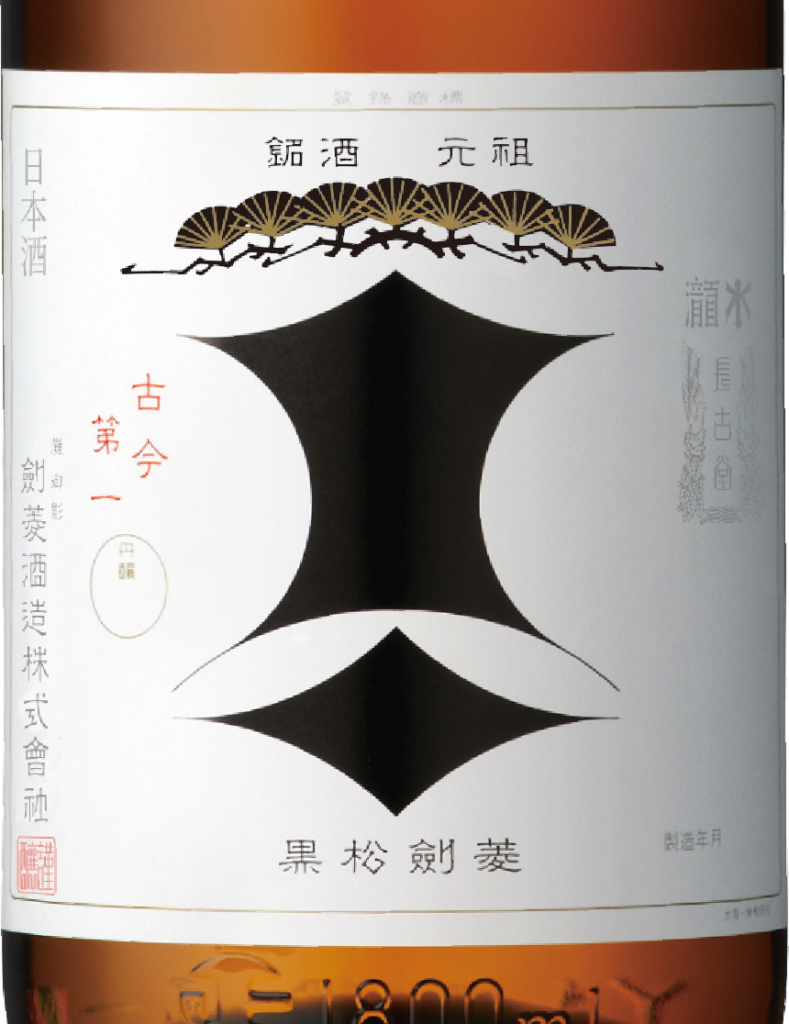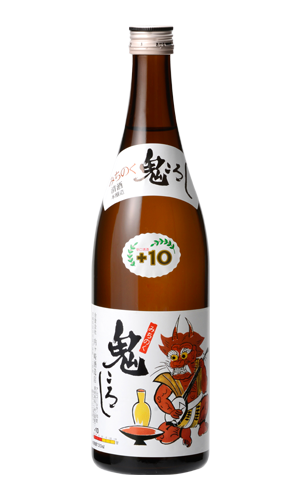
Introduction to Honjozo Sake
Japanese sake, known for its rich cultural heritage and diverse flavor profiles, offers a variety of types to explore. Among these, Honjozo sake holds a special place, characterized by its delicate balance of flavors and a smoother finish compared to other types. This guide aims to introduce beginners to the world of Honjozo sake, demystifying its complexities and highlighting its unique charm.
Understanding Honjozo Sake

What Is Honjozo Sake?
Honjozo sake is a type of Japanese sake made with rice, water, koji mold, yeast, and a small addition of distilled brewers alcohol. This added alcohol, less than 10% of the sake's total volume, enhances its aroma and flavor, resulting in a lighter, more refined taste. The rice used in Honjozo sake is polished to remove at least 30% of the outer layer, focusing on the starchier core which is essential for sake's fermentation process.
The History of Honjozo Sake
Honjozo sake's origins trace back to a time when brewers sought to create a sake that balanced purity with accessibility. The introduction of a small amount of distilled brewers alcohol revolutionized sake production, allowing for a clearer, more aromatic beverage that appealed to a wide audience. This evolution marked a significant chapter in the rich history of sake, showcasing innovation while honoring tradition.
The Distinct Position of Honjozo Sake in Japanese Culture
Honjozo sake is actually distinguished by the addition of a small amount of distilled brewers alcohol during its brewing process. This addition enhances the sake's aroma and lightens its flavor profile, making it more versatile for pairing with a wide range of foods and suitable for various drinking occasions. In contrast, Junmai sake is made solely from rice, water, koji, and yeast, without the addition of distilled alcohol, often resulting in a richer and fuller taste. Therefore, Honjozo sake typically presents a lighter, more approachable character compared to its Junmai counterpart, making it a particularly accessible choice for those new to sake and for those seeking a sake option that complements a broad spectrum of culinary flavors. This distinction highlights Honjozo sake's role in broadening the appeal of sake through its delicate balance of tradition and innovation.
How to Read a Honjozo Sake Label
Deciphering a Honjozo sake label can greatly enhance your selection process. Key information such as the rice polishing ratio indicates the level of grain refinement, while the sake meter value (SMV) offers insight into the sake's dryness or sweetness. Acidity levels and the presence of specific terms like "Honjozo" help identify the sake type, guiding enthusiasts towards their preferred flavor profiles.
The Brewing Art of Honjozo Sake

Ingredients and Process
The quality of ingredients plays a crucial role in the brewing of Honjozo sake. The water's purity, the rice's variety and polishing ratio, and the skill in crafting koji mold all contribute to the sake's final character. The brewing process involves multiple parallel fermentations within a carefully controlled environment, ensuring a smooth blend of flavors and aromas. The addition of distilled alcohol at the end of the brewing process is a defining step that differentiates Honjozo from other sake types.
The Science Behind the Flavor
The rice polishing ratio is pivotal in defining Honjozo sake's flavor profile. By polishing rice to remove at least 30% of the outer layer, brewers are left with the shinpaku, the starchy heart of the rice grain, which is ideal for fermentation. This process ensures a cleaner, more refined taste, allowing the subtle flavors and aromas of the sake to shine through.
The Allure of Honjozo Sake

Flavor Profile and Aromas
Honjozo sake is celebrated for its elegant, smooth taste and a clean finish. It often presents a delicate balance of light fruitiness and mild umami notes, making it an excellent choice for both sake novices and connoisseurs. The added alcohol not only enhances its fragrance, often giving rise to floral or fruity aromas but also contributes to a lighter body, making Honjozo sake remarkably easy to drink.
Food Pairings
The versatility of Honjozo sake makes it an ideal companion for a wide array of cuisines. Its lightness complements delicate dishes like sushi and sashimi, while its nuanced flavors can also stand up to richer, more savory foods. Experimenting with Honjozo sake and food pairings can be a delightful culinary adventure, enhancing both the drink and the dish.
Exploring Honjozo Sake
Honjozo Sake: Three Signature Brands
Kenbishi “Kuromatsu”

Kenbishi "Kuromatsu" is one of the oldest and most revered sake brands in Japan, with a history dating back over 500 years. This Honjozo sake is known for its rich, robust flavor and velvety smoothness, embodying a perfect balance of umami and slight sweetness. "Kuromatsu" stands out for its traditional brewing techniques and the use of high-quality rice, water, and koji mold, making it a favorite among sake connoisseurs. Its bold character pairs exceptionally well with hearty dishes, offering a timeless sake experience.
Michinoku Onikoroshi “Honjozo”

Michinoku Onikoroshi "Honjozo" carries a name that translates to "demon slayer," hinting at its strong, impactful flavor. Produced in the Tohoku region, this sake is celebrated for its crisp, clean taste with a dry finish that makes it incredibly versatile for pairing with a wide variety of foods. Its light, refreshing profile is achieved through meticulous brewing processes, where a slight addition of distilled alcohol enhances its aroma and drinkability. Michinoku Onikoroshi is an excellent introduction to the Honjozo category, suitable for both casual and formal occasions.
Hakkaisan “Tokubetsu Honjozo”

Hakkaisan Brewery, located at the foot of Mount Hakkai in Niigata, is renowned for producing sake that mirrors the purity and serenity of its snowy surroundings. The "Tokubetsu Honjozo" is a special designation that means "extra special," indicating a higher degree of rice polishing and careful selection of ingredients. This sake is characterized by its light and smooth profile, with a subtle complexity that unfolds with each sip. Its clean, crisp taste is complemented by a gentle aroma, making Hakkaisan's "Tokubetsu Honjozo" a refined choice for those seeking an elegant sake experience.
Honjozo Sake Serving Tips
Enjoying Honjozo sake can vary based on personal preference, with options to serve it chilled, at room temperature, or gently warmed. Each serving method can reveal different facets of its flavor profile, making Honjozo sake a versatile choice for any occasion.
Honjozo Sake FAQ
- Difference between Honjozo and Junmai: The main difference lies in the addition of distilled alcohol in Honjozo sake, which lightens its body and enhances its aroma.
- Can Honjozo sake be enjoyed warm or cold? Yes, Honjozo sake is adaptable to both serving temperatures, with the choice often depending on the season or personal preference.
- Shelf life and storage tips: Honjozo sake, like most sake, is best enjoyed fresh but can be stored in a cool, dark place or refrigerated after opening to maintain its quality.
Conclusion
Honjozo sake offers a gateway into the diverse world of Japanese sake, with its accessible flavors and elegant smoothness. Whether you're a seasoned sake enthusiast or a curious newcomer, Honjozo sake provides a delightful experience, inviting exploration and enjoyment. As you venture into the world of sake, let the light, harmonious character of Honjozo be your guide to discovering the rich traditions and modern expressions of this beloved Japanese beverage.
